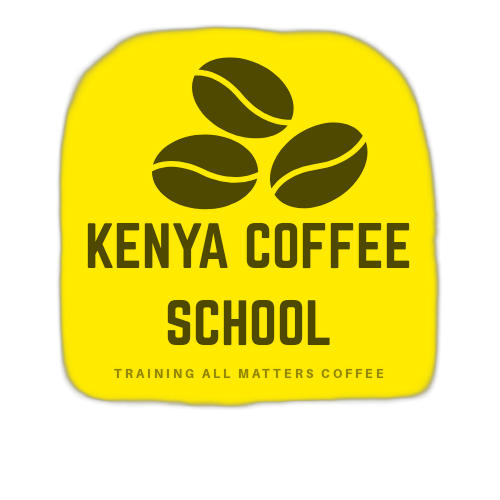COFFEE VALUE ANALYSIS (CVA)
“Redefining Coffee Quality and Value from the African Lens”
🔰 1. Purpose & Philosophy
Objective:
To establish an authentic African methodology of assessing coffee value — integrating scientific precision, sensory depth, and cultural intelligence.
Philosophy:
“Coffee Value is more than a score — it’s a story of soil, science, skill, and soul.”
— Kenya Coffee School (KCS)
Core Values:
- Farmer-Centric: Focus on the grower’s impact and value share.
- Youth & Skills Driven: Linked to KCS and Barista Mtaani training.
- Digital & Data-Based: Uses local data (moisture, altitude, roast, processing).
- Cultural Context: Integrates Kiswahili and African aroma expressions.
- Sustainability-Weighted: Includes environmental and social dimensions.
⚙️ 2. Structure of the KCS Coffee Value Analysis (CVA)
| Module | Focus Area | Description | Scoring Weight |
|---|---|---|---|
| 1. Physical Analysis (PA) | Green & roasted coffee physical quality | Defects, size, color, moisture, density, roast profile | 25% |
| 2. Sensory Descriptive Analysis (SDA) | Sensory identity profiling | Flavor, aroma, acidity, sweetness, mouthfeel, aftertaste | 30% |
| 3. Affective Quality Analysis (AQA) | Liking / preference impression | Barista, farmer, and consumer sensory impression | 20% |
| 4. Extrinsic & Traceability Analysis (ETA) | Process, origin, ethics, and sustainability | Documentation, traceability, farmer benefit, processing ethics | 15% |
| 5. Value Impact Index (VII) | Economic & social value metrics | Price to farmer, impact rating, local consumption, carbon footprint | 10% |
Total Value Score = Weighted Average of All Modules
🧪 3. Module Breakdown
A. Physical Analysis (PA)
Objective: Measure the scientific and physical attributes of coffee quality before roasting.
Parameters:
- Moisture content (ideal: 10–12%)
- Screen size distribution (e.g. AA, AB, PB)
- Defects count (primary & secondary)
- Bean color and density
- Roast uniformity and color (Agtron scale or digital reading)
Tools:
- Digital moisture meter
- Digital scale
- Color reader (Agtron or SCS Digital Roaster Sensor)
- KCS Physical Form
KCS Form Example (PDF layout section):
| Parameter | Result | Standard | Comments |
|---|---|---|---|
| Moisture % | 10.8 | 10–12 | Ideal |
| Screen Size | 18 | AA Grade | Uniform |
| Defects | 2 | <5 | Clean sample |
| Density | 1.28 | 1.25–1.30 | Excellent |
| Roast Color | 65 Agtron | Medium | Balanced roast |
B. Sensory Descriptive Analysis (SDA)
Objective: Objectively describe the sensory profile of a coffee sample.
Parameters:
- Aroma & Flavor Attributes
- Acidity, Sweetness, Body, Aftertaste
- Balance & Complexity
- Uniformity across cups
Scoring Scale:
15-point intensity scale (1–15), calibrated by Kenya Coffee School’s Sensory Lab and aligned with SCS Descriptive Toolkit.
Language Integration:
Use both English & Swahili/African Sensory Lexicon, e.g.
- “Mbivu matunda” (ripe fruits)
- “Mavumbi ya kahawa” (dusty coffee)
- “Tamu tamu ya asali” (sweetness of honey)
Example Flavor Descriptors Table:
| Descriptor | Intensity (1–15) | Swahili Equivalent |
|---|---|---|
| Fruity | 13 | Matunda |
| Floral | 10 | Maua |
| Cocoa | 9 | Chokoleti |
| Acidity | 12 | Asidi safi |
| Sweetness | 14 | Utamu |
| Body | 11 | Mzito |
| Aftertaste | 12 | Ladha ya Mwisho |
C. Affective Quality Analysis (AQA)
Objective: Capture emotional and cultural responses to coffee quality.
Respondents:
- Trained panel (cuppers & baristas)
- Farmers
- Consumers (blind tasting)
Method:
- 9-point hedonic scale (1 = dislike extremely, 9 = like extremely)
- Weighted average from 3 panels
Sample Form Section:
| Panel Type | Average Score (1–9) | Weighted % |
|---|---|---|
| Barista | 8.2 | 40% |
| Farmer | 8.5 | 30% |
| Consumer | 7.8 | 30% |
| Weighted AQA Score | 8.16/9 | 20% |
D. Extrinsic & Traceability Analysis (ETA)
Objective: Evaluate the ethical, social, and environmental value attached to the coffee.
Parameters:
- Traceability (farm → cup)
- Sustainability practices (water, energy use)
- Farmer payment transparency
- Certification or G4T compliance
- Local processing & packaging
Scoring:
1–10 per attribute; weighted total out of 100.
E. Value Impact Index (VII)
Objective: Quantify how the coffee contributes to real economic and social value.
Core Metrics:
- Farmer price per kg vs export price
- % of value retained locally
- Gender/youth inclusion rate
- Local consumption factor
- Carbon and water footprint index
Formula Example:
VII = \frac{Farmer\ Price}{Export\ Price} \times 100 + Inclusion + Sustainability
📈 4. Reporting Format
Final Coffee Value Report includes:
- General Information (origin, altitude, process)
- Physical Analysis Sheet
- Sensory Descriptive Sheet
- Affective Report
- Traceability Evaluation
- VII Computation
- Final KCS Coffee Value Certificate
Each sample receives a Value Class:
| Score Range | Classification | Meaning |
|---|---|---|
| 90–100 | Platinum Specialty | World-class, unique African profile |
| 85–89 | Gold Specialty | Exceptional quality, clean and distinct |
| 80–84 | Silver Specialty | Specialty grade, consistent |
| 70–79 | Commercial Premium | Fine but not specialty |
| <70 | Commercial Standard | Improvement required |
🧰 5. Tools & Technology
- KCS Digital CVA App (planned) — for real-time scoring and traceability.
- SCS Sensor Suite — integrates physics and chemistry for roast and aroma analysis.
- Blockchain / QR Trace — for digital coffee value chain tracking.
- AROMA LEXICON KIT — localized Swahili–English sensory training kit.
📚 6. Implementation Pathway
- Pilot in Nyeri / Kiambu — link with farmers & roasters.
- Train CVA Analysts — through Kenya Coffee School diploma module.
- Adopt for GOOD Trade Certification — CVA becomes official value protocol.
- Global Recognition — Position KCS CVA as the African standard alongside SCA and CQI.
